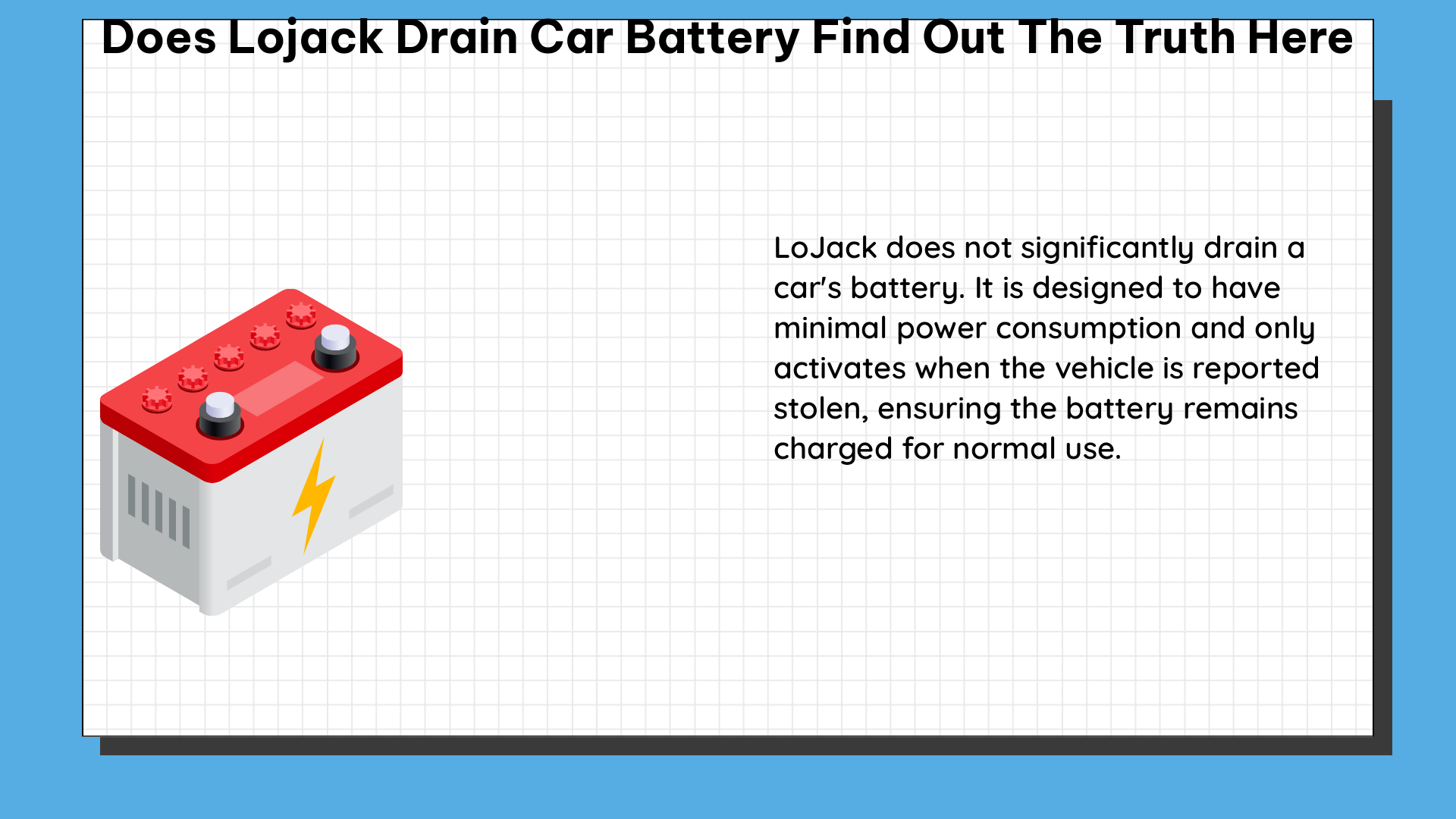LoJack, a popular stolen vehicle recovery system, has been a topic of discussion among automotive enthusiasts due to concerns about its potential impact on car battery life. While LoJack’s official website claims that their system is battery-operated, there have been numerous reports from users about battery drain issues. In this comprehensive guide, we’ll delve into the technical details, user experiences, and provide a DIY troubleshooting approach to help you understand the truth behind the LoJack battery drain phenomenon.
LoJack’s Battery Backup: A Potential Culprit
LoJack’s system is designed with a battery backup to ensure its functionality even when the car’s main battery is disconnected or drained. However, this backup battery is not rechargeable, which can lead to issues if the car’s battery is left disconnected for an extended period.
According to user reports, if a car mechanic leaves the battery unplugged for a prolonged duration, the LoJack’s backup battery can become depleted, rendering the system useless when the car is stolen, and the battery is disconnected. This scenario can result in a drained car battery when the vehicle is returned to the owner.
Non-Factory Wiring Modifications: A Hidden Drain

Another potential cause of battery drain issues with LoJack systems is the presence of non-factory splices in the wiring near the LoJack device. Users have reported instances where they noticed these unauthorized modifications, which they believe may have been made by the LoJack installer or a “kill switch guy.”
These non-factory splices can create an unwanted electrical path, leading to a constant drain on the car’s battery, even when the vehicle is not in use. Identifying and addressing these wiring issues can be a crucial step in resolving battery drain problems.
LoJack’s Lithium Battery: A Ticking Time Bomb?
Some users have reported that their LoJack units contain a 6-volt lithium battery, which can eventually die, causing the unit to become an electrical drain on the car’s battery. As the lithium battery ages and loses its charge, it can continue to draw power from the car’s battery, leading to a gradual discharge.
To address this issue, users have found that disconnecting the LoJack units, typically located under the rear seat, can resolve the battery discharge problems they were experiencing.
Monitoring Battery Life and Troubleshooting
To ensure the longevity of your car’s battery and the proper functioning of your LoJack system, it’s essential to monitor the battery life closely. Here are some steps you can take:
-
Check for Non-Factory Wiring Modifications: Visually inspect the wiring near the LoJack device for any non-factory splices or unauthorized modifications. If found, consider having a qualified mechanic address the issue.
-
Observe Battery Discharge Patterns: Pay attention to any unusual battery drain, especially when the car is not in use. If you notice a consistent or rapid discharge, it may be an indication of a LoJack-related problem.
-
Disconnect the LoJack Unit: If you suspect the LoJack unit is the culprit, consider temporarily disconnecting it to see if the battery drain issue is resolved. This can help you determine if the LoJack is the root cause of the problem.
-
Replace the LoJack Battery: If your LoJack unit has a lithium battery, consider replacing it with a fresh one to eliminate the potential for a dying battery causing a drain on your car’s battery.
-
Consult a Professional: If you’re unable to resolve the battery drain issue on your own, it’s recommended to seek the assistance of a qualified automotive technician who can thoroughly diagnose the problem and provide a solution.
Conclusion
While LoJack is a valuable tool for stolen vehicle recovery, the potential for battery drain issues cannot be ignored. By understanding the technical details, user experiences, and following a structured troubleshooting approach, you can effectively address any battery-related problems associated with your LoJack system. Remember, proactive monitoring and timely maintenance are key to ensuring the longevity of your car’s battery and the reliable performance of your LoJack device.
References:
- Automotive Forums: https://www.automotiveforums.com/t1158086-battery_drain_lojack_.html
- Bob Is The Oil Guy: https://bobistheoilguy.com/forums/threads/lojack-warning.236520/
- Reddit: https://www.reddit.com/r/mechanic/comments/14vexs8/battery_life_issues_lojack/?rdt=55495
- SVTPerformance.com: https://www.svtperformance.com/threads/lojack.759663/
- LoJack Customer Support: https://www.lojack.com/customer-support/faqs/

The lambdageeks.com Core SME Team is a group of experienced subject matter experts from diverse scientific and technical fields including Physics, Chemistry, Technology,Electronics & Electrical Engineering, Automotive, Mechanical Engineering. Our team collaborates to create high-quality, well-researched articles on a wide range of science and technology topics for the lambdageeks.com website.
All Our Senior SME are having more than 7 Years of experience in the respective fields . They are either Working Industry Professionals or assocaited With different Universities. Refer Our Authors Page to get to know About our Core SMEs.